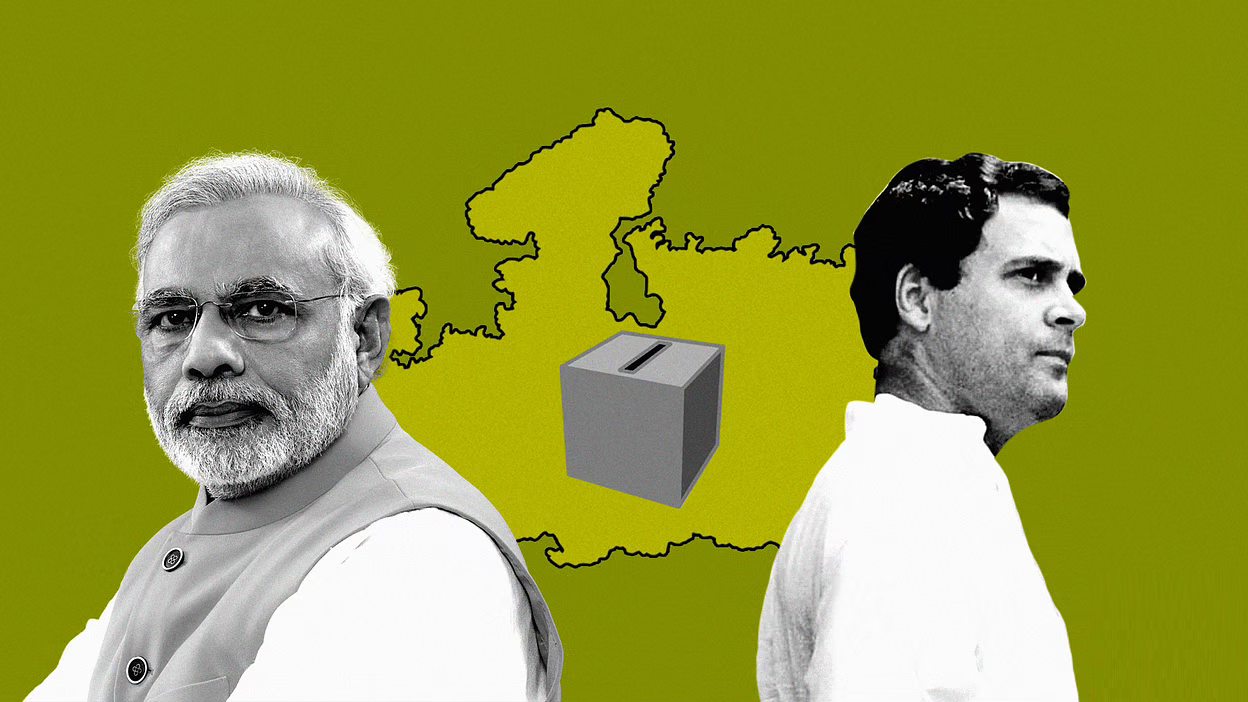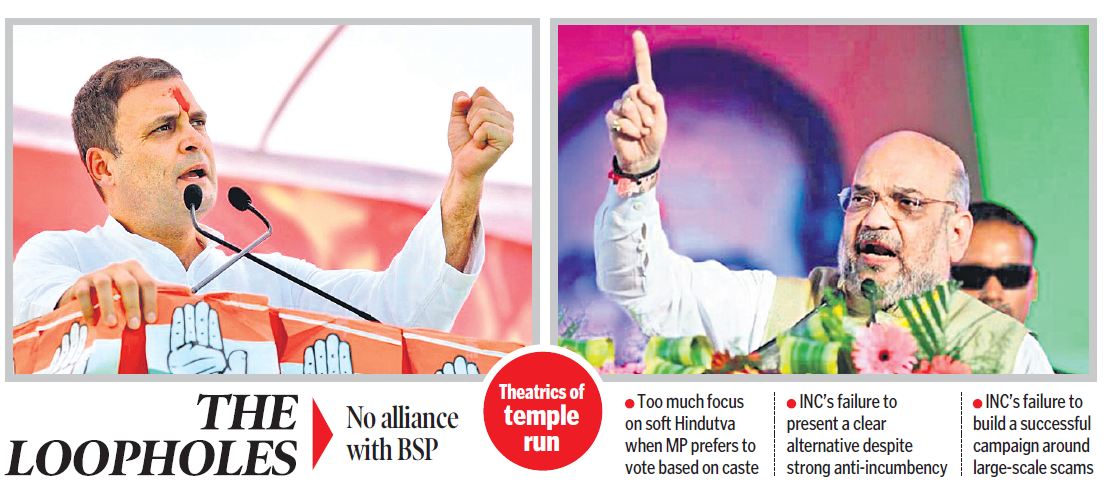A new political landscape
Karnataka Congress victory orchestrated by KPCC President DK Shivakumar and chief minister Siddaramaiah has given a big boost to Telangana Congress and to the INC high command. it will only be apt to say that the last assembly election win of INC on 13th May 2023 has changed a few things to the political landscape of south Indian politics and that is – rise in the moral of INC voters and politicians. This changed landscape would impact the results of the scheduled Telangana assembly election in November.
The sum-total of all the assembly wins at Karnataka has fueled the aspirations of politicians at Telangana and the result is unprecedented rise of INC in the state. The Telangana assembly election which was mostly a battle between BRS-BJP a few months back is a fierce battle among BRS-INC-BJP now.
The last Telangana assembly election K Chandrashekar Rao (KCR) had opted for early assembly election to prevent Telangana assembly election colliding with general election. KCR wanted to have assembly election before the parliamentary election to assure a massive win. He was confident of coming back to power and wanted to assure the size of the vote share in assembly election. The astute politician and campaign manage KCR also knew that BJP and Modi will play its Nationalism and Hindutva cards in Telangana which will make it difficult for him to manage the massive win. He was comfortable with the fact that INC may not get the sizable vote share to challenge the massive win.
It has also evident to the voters of the state that the emotions of a father-politician in KCR is playing strong and the cunning leader of past has taken back seat. This change in the strong personal brand KCR has not gone well with the voters. Having said, the state has witnessed rise of a young, vibrant and urban leader in form of KTR in last five years. It is difficult to say the how the rise of KTR has gone down with Harish Rao and how he would play his cards in the future. But it is important to understand that the future of BRS is also the function of Harish Rao’s political play. This changed dynamics has created a new political landscape, which is fragile and up for grab by the two national parties.
In 2023. anti-incumbency is haunting KCR’s chances to present a massive win. In the last election he escaped anti-incumbency due to INC’s illogical alliance with TDP. Moreover, he also played the best bet by and going for early polls. The current chief minister, KCR is confident that he would come back as the chief minister of the state but not sure of the size of the vote share, and the magnanimity of the win.
The 2023 Telangana assembly election the current chief Minister K Chandrasekhar Rao (KCR) is facing a three-cornered contest from the INC and the BJP. This election is different, fierce, and too close to predict.
Bharat Rashtra Samithi (BRS) still going strong.
Since the formation of Telangana State in 2014, people of Telangana have given clear mandate to KCR in both assembly elections. In 2018 KCR was the most popular leader of the state, Harish Rao was the strongest leader in the suburban and rural Telangana, and KTR was emerging as an intelligent urban leader.
In 2018, the voters of the Telangana were in safe hands with the BRS leadership but the combined popularity of the three top leaders was not the only reason of the landslide victory. A weak opposition was the other – in the last election there were just a few big names in the opposition cadre struggling to gain the momentum. In 2018, a meek opposition was the catalyst that worked in KCR’s favor but now the scenario is different, and we are witnessing the rise of two national parties in the state.
In last few years, the voters of Telangana have experienced the governance of chief minister KCR and shadow chief minister Kalvakuntla Taraka Rama Rao (KTR) (KTR is known as shadow chief minister) and they are happy with the governance model of father and son. But, the local BRS leaders have profusely expressed displeasure over the rise of one family governance in the state and concentration of power in hands of father and son. In addition, the original party leaders – one who have been with KCR since formation of the party, are also not happy with the influx of leaders form INC. Moreover, the KCR’s ambition to entry into the national politics, leaving Telangana chief ministers chair to his son KTR is finding a few takers in the state politics. Worst, this has created an image that KCR is no longer interested in state and wants to focus on the national politics. The ambition to entry into the national politics has progressively changing the strong regional focused brand that KCR had created over years and may move a sizable share of swing voters from BRS to INC.
Rise of BJP in the State
In parliamentary election BRS faced setback, when BJP made inroads in Telangana by winning 4 seats out of 13 seats. The fear of KCR that Modi will play Nationalism and Hindutva cards and that will change the political dynamics came true when K Kavitha, daughter of KCR, lost Nizamabad seat against BJP candidate.
The win of four parliamentary seats paved the way for BJP growth in Telangana. The mood of the voters is shifting towards BJP was witnessed once again, in 2020 Greater Hyderabad Municipal Corporation election, when party won 48 seats. The most popular party BRS with 56 seats couldn’t win majority in municipal election and that forced KCR to join hands with AIMIM in GHMC. Though BJP had a few wins, but it will only be apt to say that the voters of Telangana are still standing tall with KCR but repeating 2018 victory will not be an easy task as in the last five years opposition has gain momentum and has nurtured their leaders.
The largest political party – BJP, though won seats in parliamentary and GHMC elections but failed to build party in the rural Telangana. The party still lacks strong local leadership and have a very poor rural presence. Moreover, the BJP local leadership lack on-ground presence and are heavily dependent on central leadership. Worst, local party leadership is unwilling to actively participate in election campaigning. It will only be apt to say that BJP has failed to set narrative for the Telangana elections and lost its ground over last few months.
The BJP which was seen as the key challenger to BRS in the Telangana assembly election is now positioned as the third largest party after INC and it is also believed that many BJP leaders may jump ship to INC or BRS post-election results.
Definite Fall and Probable Rise of INC
In 2018, Nalamada Uttam Kumar Reddy failed to manage the party and organize the INC cadre. We also witnessed that post 2018 poll debacle the party suffered a huge setback as INC MLAs bypassing anti-defection law and joined BRS government. This movement of INC leaders joining BRS government created an impression that INC is not interested in the state politics. It also changed perception of voters and key political leaders that INC as a political party has lost ground in the state further pushed disgruntled INC leaders to joined BJP.
After a grand victory of INC Karnataka in last assembly election INC Telangana adopted Karnataka model of politicking and started to focus on guaranteed schemes. Moreover, the political strategist Sunil Kanugolu is helping Revanth Reddy to gain the voters trust and bring the party back in the Telangana political landscape. It is also believed that Karnataka DCM DK Shivakumar is helping him in resource mobilization.
Historically INC has good presence in rural Telangana and that may work in its favor. But the party lacks strong local Muslim and backward leaders who can put tough a fight to BRS and AIMIM.
The probable mandate
As I understand, BRS may come back to power for straight third term with simple majority, INC may get 30+ seats, and BJP and AIMIM may bag 7 to 8 seats each. But a hung assembly scenario where both BRS and INC getting 40+ seats and fall short of majority can not be ignored.






